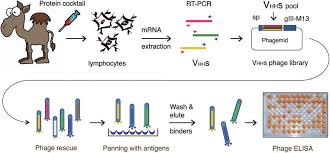
Monitoring biodegradative enzymes with nanobodies raised in Camelus dromedarius with mixtures of catabolic proteins
Environmental Microbiology
Volume 13, Issue 4, April 2011, Pages 960-974
Zafra, O., Fraile, S., Gutiérrez, C., Haro, A., Páez-Espino, A.D., Jiménez, J.I., De Lorenzo, V.
Abstract
Functional studies of biodegradative activities in environmental microorganisms require molecular tools for monitoring catabolic enzymes in the members of the native microbiota. To this end, we have generated repertories of single-domain VHH fragments of camel immunoglobulins (nanobodies) able to interact with multiple proteins that are descriptors of environmentally relevant processes. For this, we immunized Camelus dromedarius with a cocktail of up to 12 purified enzymes that are representative of major types of detoxifying activities found in aerobic and anaerobic microorganisms. Following the capture of the antigen-binding modules from the mRNA of the camel lymphocytes and the selection of sub-libraries for each of the enzymes in a phage display system we found a large number of VHH modules that interacted with each of the antigens. Those associated to the enzyme 2,3 dihydroxybiphenyl dioxygenase of Burkholderia xenovorans LB400 (BphC) and the arsenate reductase of Staphylococcus aureus (ArsC) were examined in detail and found to hold different qualities that were optimal for distinct protein recognition procedures. The repertory of anti-BphC VHHs included variants with a strong affinity and specificity for linear epitopes of the enzyme. When the anti-BphC VHH library was recloned in a prokaryotic intracellular expression system, some nanobodies were found to inhibit the dioxygenase activity in vivo. Furthermore, anti-ArsC VHHs were able to discriminate between proteins stemming from different enzyme families. The easiness of generating large collections of binders with different properties widens considerably the molecular toolbox for analysis of biodegradative bacteria and opens fresh possibilities of monitoring protein markers and activities in the environment.



